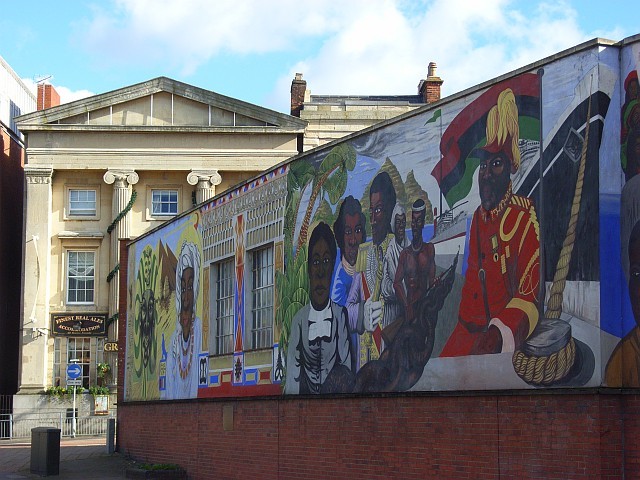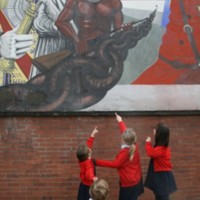The project began in 1987 when Central Club approached Reading Borough Council about the possibility of a mural project. A project steering group was set up consisting of representatives of Central Club, Reading Borough Council and Berkshire County Council (who then ran Central Club as part of the Youth and Community Service). It was agreed that the project should aim to achieve a number of objectives:
· A high quality visual artwork
· Community involvement – both Central Club members and the wider community
· Reflecting African Caribbean culture, since Central Club had a high proportion of African Caribbean members
In 1988 a number of artists were interviewed, and Alan Howard was offered the commission. Alan was keen to encourage the involvement of Central Club members both in a consultative capacity but also more directly in the design and execution of the mural. An apprenticeship scheme was established, where a limited number of people were offered the opportunity to work alongside Alan and receive training in planning, design and technical skills.
The process of planning the mural involved a number of steps:
· Wide ranging discussions with Central Club members and the wider African Caribbean community
· Consultation with funders – Reading Borough Council and Earley Charities
· Consultation with neighbouring residents and businesses in the London Street area
Out of this process the theme for the mural emerged, and it was agreed that the mural should depict the positive role that black people have played throughout history, including in Reading itself. The mural therefore includes figures such as Harriet Tubman, Martin Luther King and Bob Marley as well as Reading-based people involved in founding Central Club. The final panel of the mural and the various symbols look to the future and depicts a number of tools – positive and negative – that people use to shape the future.


